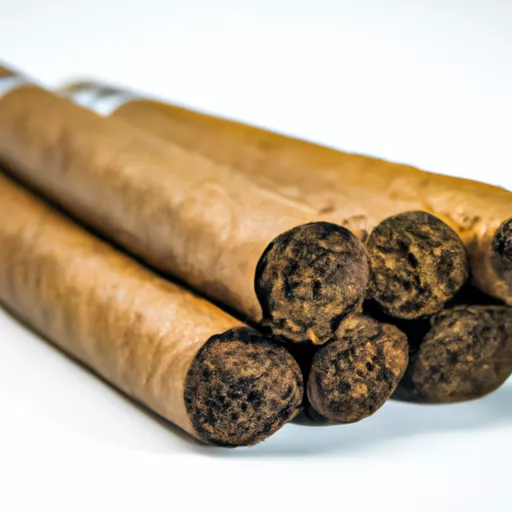
As a cigar aficionado, I have always appreciated the quality and complexity of a well-made cigar. However, there are times when I crave a cigar but don’t have the time or occasion to enjoy a full-sized one. That’s when I turn to little cigars.
Little cigars, also known as “cigarillos”, are small, thin cigars that offer the same distinct flavor and aroma of a full-sized cigar, but in a more compact and convenient size. These miniature cigars have been gaining popularity in recent years, and for good reason. In this article, I will delve into the world of little cigars, sharing my knowledge and experience as a cigar lover.
History of Little Cigars
The origins of little cigars can be traced back to the 19th century in Europe, where they were known as “cheroots”. These small cigars were popular among both men and women, as they were seen as a more feminine alternative to traditional cigars. However, it wasn’t until the mid-20th century that little cigars were introduced to the United States.
In the 1960s, the popularity of little cigars in the US skyrocketed, thanks to Swisher Sweets, a tobacco company that marketed their small cigars as a “sweet” and “mild” option for casual smokers. Today, little cigars come in a variety of flavors and are popular among both men and women, making them a staple in the cigar market.
Composition and Construction
Little cigars are typically made from a blend of short-filler tobaccos, just like their larger counterparts. However, the leaves used in little cigars are usually lower in quality and can be a mix of both long and short fillers. This is what makes little cigars more affordable than full-sized cigars.
The outer wrap, or wrapper, of a little cigar is usually a homogenized tobacco leaf, which is a processed form of tobacco that allows for a consistent burn and minimal flavor variation. Some little cigars have natural tobacco wrappers, but they are less common due to the cost and difficulty of using them on such a small scale.
Unlike full-sized cigars, which are hand-rolled, little cigars are usually machine-made. This makes them more consistent in shape and construction. They are also easier to inhale, as they are less tightly packed than traditional cigars.
Flavors and Aromas
One of the biggest appeals of little cigars is the variety of flavors available. From sweet and fruity to bold and spicy, there is a flavor to suit every palate. Some of the most popular flavors include cherry, vanilla, and chocolate. These flavors are obtained through additives and flavorings added during the blending process.
In terms of aroma, little cigars can have a strong and distinct smell, much like traditional cigars. However, some are milder in aroma, making them more pleasant for non-smokers or indoors usage. The aroma of a little cigar can also depend on the flavor, with sweeter flavors having a more noticeable scent.
Comparing Little Cigars to Cigarettes
It’s important to note that little cigars should not be confused with cigarettes. While both are smaller than traditional cigars, there are significant differences between the two.
First and foremost, little cigars contain a higher percentage of tobacco than cigarettes. This means that they have a richer, more complex flavor. Additionally, little cigars are not meant to be inhaled, unlike cigarettes, which are specifically designed for inhalation. In fact, trying to inhale a little cigar can result in coughing or discomfort.
Another difference is in the way they are produced. As mentioned earlier, little cigars are made with a mix of short and long-fillers, just like traditional cigars. On the other hand, cigarettes are made of finely shredded tobacco, wrapped in a paper casing.
Despite these differences, little cigars are often packaged and sold alongside cigarettes in stores, leading to confusion among consumers. It’s important to remember that little cigars are still a tobacco product and should be used responsibly.
How to Properly Enjoy a Little Cigar
As with any cigar, proper storage is crucial for little cigars. Ideally, they should be kept in a humidor, just like traditional cigars. This will ensure that the cigars maintain their moisture and flavor. However, if you don’t have a humidor, you can store them in a sealed plastic bag with a moistened cedar strip or a small damp sponge. This will help prevent them from drying out.
When it comes to smoking a little cigar, there is no need for a cutter or punch. Simply remove the cellophane and light the cigar using a butane lighter or a wooden match. Take slow and steady puffs, allowing the cigar to burn evenly. And remember, never inhale the smoke.
Little cigars can be enjoyed on their own or paired with a variety of beverages, such as coffee, tea, or whiskey. The flavors and aromas of the cigar can enhance the flavors of the drink, creating a perfect union for your taste buds.
In Conclusion
Little cigars offer a unique experience for cigar enthusiasts and casual smokers alike. With a wide range of flavors, aromas, and a more affordable price point, they are a convenient and enjoyable option for those who don’t have the time or occasion for a full-sized cigar. Just remember to store them properly and enjoy responsibly.
As for me, I will always appreciate the beauty and craftsmanship of a traditional cigar, but I will never turn down a well-made little cigar. They may be small in size, but they pack a big punch in terms of flavor and enjoyment. So next time you’re looking for a quick and satisfying smoke, give a little cigar a try. You may be pleasantly surprised.